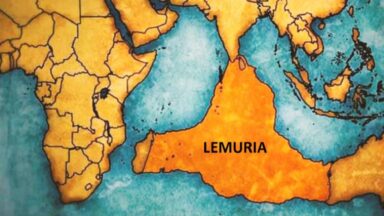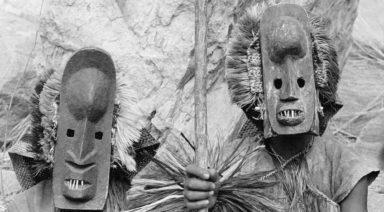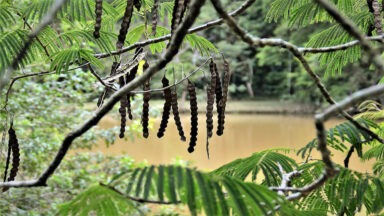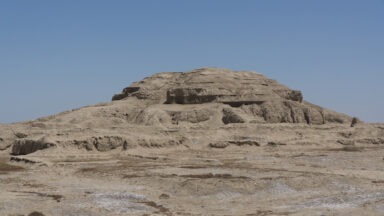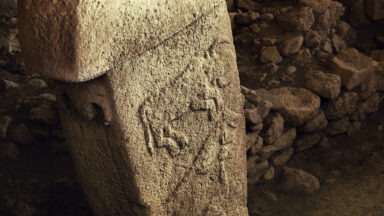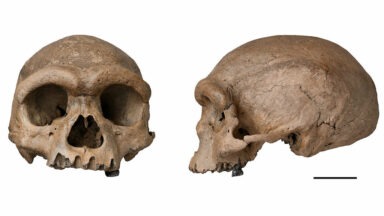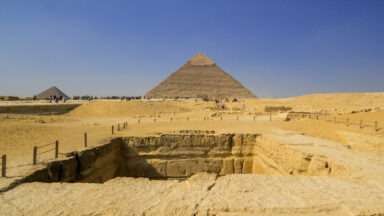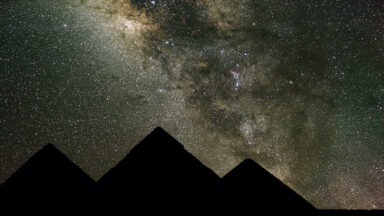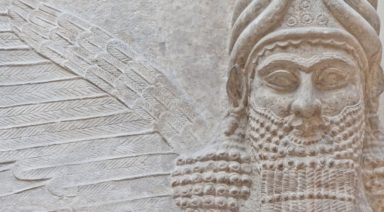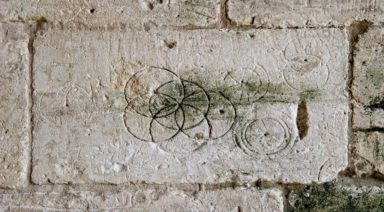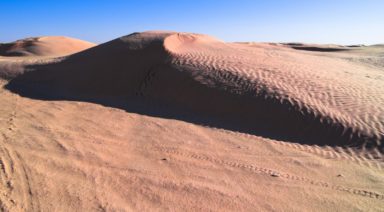Join Gaia As We Investigate Anomalous Finding Unearthed in Nazca, Peru

In the spring of 2017, Gaia filmmakers joined researchers and scientists just outside of Nazca, Peru to investigate an unearthed mummified body. Independent scientists and universities are currently analyzing findings, with initial examinations suggesting the possibility of material that is unlike anything found in the fossil record.
The recent findings in Peru, while exciting, pose some interesting questions regarding the way that discoveries of this nature should be approached.
As humans, we have an innate curiosity when it comes to making sense of the world around us. This inquisitive nature is especially noted when it comes to the history of our origins and knowing more about our ancestors. And while the minds of archeological stalwarts can be difficult to sway, new discoveries continue to present paradigm shifts and give new insight into the evolution of our world.
Archeologists are no strangers to false alarms and discoveries that sound too good to be true. They often have the difficult job of debunking myths and disproving fabricated findings. While this can be frustrating and create potential setbacks, it can also provide us with a healthy skepticism, setting standards for the burden of proof. And it is through this process of scrutiny that discoveries are made, changing our perspective and allowing for growth.
Promising Findings
As of late, there have been findings setting back our preconception of when our homo sapien ancestors first came into existence. Fossils found at the Jebel Irhoud site in Morocco were dated at 300,000 years old, setting back our ancestry by over 100,000 years. Not only has this finding changed the scope of when these hominids came into being, but it also changed theories about where they came from and how they behaved.
In April of this year, the Wall Street Journal reported on archeologists who found signs of hominid activity in the Americas. The team found hammered mastodon bones with the man-made tools that were used to crush them. Their proposed evidence shifts migration timelines to the Americas back by 100,000 years or more. This was said to be preposterous by many of their colleagues, but now new theories like these are likely to be given more attention and could lead to profound results. While the burden of proof is heavy when it comes to changing long-held beliefs, spontaneous findings prove how narrow our scope can be and how much more there is to learn.
An archeological conundrum that has also challenged mainstream historical narratives are the Paracas skulls found in Peru. While the elongated skulls have been debated as to the nature of their shape and whether they come from a human or non-human species, some mystery remains, even within the realist perspective. Skeptics write off their shape to artificial cranial deformation practices of ancient civilizations, but DNA testing of the skulls placed their provenance in Europe and the Middle East. The skulls also weighed 60 percent more and were 25 percent larger, a statistical anomaly left unexplained.
Another abnormal feature associated with these specimens is the location of the foramen magnum, where the spinal cord attaches to the skull, which was in a completely different location than normal skulls. Aside from these unexplained inconsistencies ignored by mainstream archeologists, the location of these skulls piques interest, especially with Gaia’s recent investigations in Nazca, Peru.
Paradigm Shifts
Within the modern era, technological advancements have allowed us to make myriad discoveries in the study of our origins. But these discoveries would never be made without challenges to the dominant narrative. And while contesting the archetypes defined by academia doesn’t always provide decisive results, they are necessary if we want to learn more.
The Sphinx water erosion hypothesis provides an example of this in which a plausible theory was quickly shut down by mainstream archeologists. John Anthony West and Robert Schoch are Egyptologists who have revived and made this argument tenable. They point out that the Great Sphinx of Giza showed signs of significant water erosion, despite an annual rainfall of no more than an inch since the dynastic Old Kingdom era. This hypothesis reverts the timeline of when the Sphinx was built, to before the time officially accepted by scholars.
A similar case, in which timelines surrounding the birth of advanced civilizations, have been challenged and proved otherwise can be found in Göbekli Tepe. The discovery of this archeological site in Turkey found monolithic structures, advanced tools and detailed architecture that was dated around 11,600 years old. This confounded archeologists and again regressed the timeline of what was originally thought to be the birth of modern civilization by thousands of years.
These discoveries have found anachronistic precedents set by mainstream history and corrected them, so what else can we learn? When we embrace these challenges through an appropriate lens, it provides us the opportunity to see who we are and why we are here.
Now with findings of this nature, we can gather data using incredibly precise measures. Given the means to expediently test organic material, there is sufficient reason for Gaia to continue to pursue its analysis. Carbon dating has shown that the samples originate between A.D. 245 – 410, and DNA sequencing is currently in progress.
With these findings in Peru, maintaining curiosity with a balanced level of apprehension is paramount. But what will this discovery mean? Without jumping to conclusions as to the origin of such a finding, if proven, our whole outlook of life on Earth could change. Our level of cognizance about who we are and where we come from could have a profoundly different trajectory. This creates an array of new questions that would challenge the status quo and potentially offer new insights into our history.
“This can change the consciousness of humanity as a whole. Finally, we accept that we know that we don’t know. All our concepts about history, about development – those are just concepts. This opens up, absolutely, a new page of history.”
- Konstanin Korotkov, PhD, Saint- Petersburg University
The Zone of Silence: An Ancient Mystery of Old Mexico

Because of Mexican engineer and chemist Harry De La Peña’s blond hair and blue eyes, since high school he had been called “El Luminaro,” the Luminous One. After a European education, De La Peña returned to Mexico to teach chemistry at the Instituto Tecnológico de Laguna in Torreon, Mexico. On a blistering day in 1966, he departed Torreon for a photo expedition with a group of friends.
On that day, El Luminaro would stumble into a zone of anomalous paradox. While native mestizos, the ethnically mixed descendants of Anglo and indigenous people, had long known the the area had strange and special qualities, it was now on the radar of a European-trained scientist. The locals believed that couples having trouble conceiving children could visit the Zone with a baby coming nine months later. Notably, Zone locals also had superior dental health with straight white teeth, and random blood samples from Zone residents show far greater health than those from outside the area.
Like the Bermuda Triangle, the Zone of Silence is located on the 27th parallel. Comprised of 1,500 square miles of inhospitable desert and extreme temperatures, there are no roads; only dirt tracks. And travel mishaps are dangerous as it’s difficult to call for help. El Zona del Silencio is an electromagnetic void; an anomaly, where compasses spin like dervishes and cell phone and radio signals are the definition of “hit-and-miss.” Even so, some view these odd reports as “deliberately invented to generate tourism and sold to the world via the mass media.”
Entering El Zona del Silencio
Ceballos, in the Mexican State of Durango, is the point of departure closest to the zone. In 1966 the town, comprised of dirt roads and shacks, was barely on the map. More than 50-years since, the roads are still some combination of dirt, dust and mud, but signs point the way to El Zona del Silencio, and a 16 kilometer rail spur provides access from the outside.
The wise enter the zone with as much ice and water as a vehicle can carry as well as extra gas. Only a fool would forget a hat. During monsoon season the ground becomes a slippery paste, and dry arroyos fill with torrential flood waters in an instant. Daytime temperatures can hit 120F and plummet to freezing after the sun drops below the horizon.
Nopal cactus grow in abundance — on the zone outskirts they have the typical green coloring, but change to pink and purple as one travels deeper into the region. What’s even weirder is that the purple and pink specimens are interspersed with green cactus plants.
Another rare species, the tailless Mapimí tortoise, is native to the area. Foot-long centipedes with purple heads and tails hunt anything they can catch, including mice and birds. Insects grow two to three times normal size, and albino reptiles and snakes are frequently sighted. Today much of the zone is within the boundaries of the Mapimí Biosphere Reserve — the inexplicable flora and fauna are subject to ongoing research.






